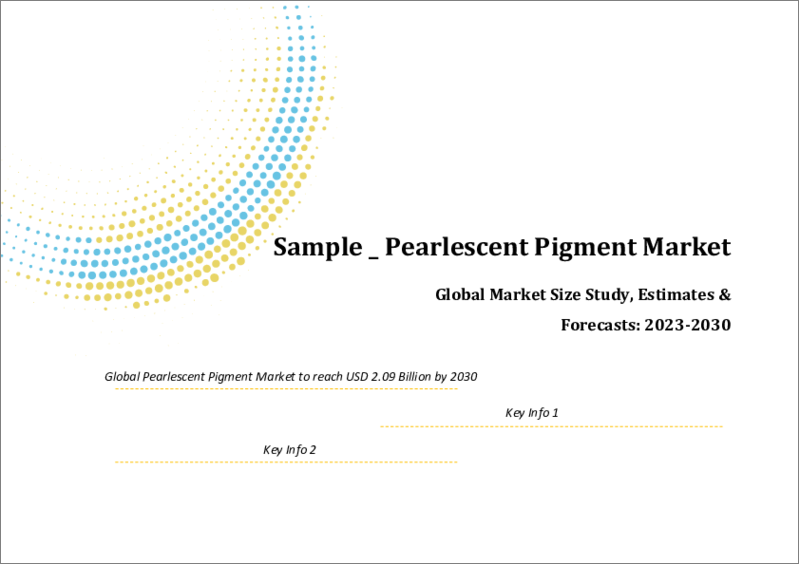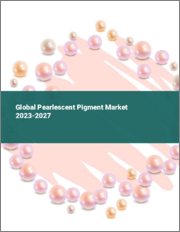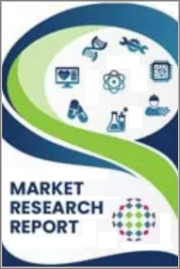
|
시장보고서
상품코드
1269582
세계의 진주 광택 안료 시장 규모 조사 및 예측 : 타입별, 용도별, 지역별 분석(2022-2029년)Global Pearlescent Pigment Market Size study & Forecast, by Type, by Application and Regional Analysis, 2022-2029 |
||||||
세계 진주 광택 안료 시장은 2021년에 약 12억 달러로 평가되며, 예측기간 2022-2029년에는 6.3% 이상의 건전한 성장률로 성장할 것으로 예측됩니다.
진주 광택 안료는 코팅된 운모 플레이트이며 다양한 종류의 코팅, 플라스틱 및 인쇄 잉크에 색상과 시각 효과를주는 데 사용됩니다. 또한 표면이 매끄럽기 때문에 투명하고 빛을 반사합니다. 이 안료는 이산화티타늄과 산화철과 같은 금속 산화물 층상 운모에 이산화티타늄과 철염을 증착시킴으로써 형성됩니다. 화장품, 퍼스널 케어 산업의 성장과 페인트, 코팅 솔루션으로의 응용 확대는 시장 성장을 촉진하는 주요 요인입니다.
화장품 및 퍼스널 케어 산업의 급증은 세계 진주 광택 안료 시장의 성장에 기여하고 있습니다. 또한, 이러한 안료는 아이섀도, 블러셔, 네일 페인트 등 다양한 화장품에 적용됩니다. 예를 들어, 2020년 현재 세계 화장품 부문의 수익은 723억 7,000만 달러로 추정되고, 예측에서 세계 화장품 부문은 2027년까지 1,254억 달러로 성장할 것으로 예측됩니다. 또한 2020년 세계 스킨케어 제품 분야의 매출은 1,287억 달러로, 2027년에는 1,815억 달러에 이를 것으로 예상됩니다. 또한, 신흥경제국가의 산업화 진전과 자동차 산업 확대는 예측기간 동안 시장에 유리한 성장 전망을 가져올 것으로 생각됩니다. 그러나 진주 광택 안료는 비용이 비싸기 때문에 2022년부터 2029년까지의 예측기간 동안 시장 성장을 방해합니다.
진주 광택 안료 세계 시장 조사에서 고려된 주요 지역은 아시아태평양, 북미, 유럽, 중남미 및 기타 지역입니다. 북미는 자동차, 페인트, 코팅, 플라스틱 등 다양한 산업에서 진주 광택 안료의 사용량이 증가하고 있으며, 이 지역에 대기업 시장 관계자가 존재하기 때문에 수익면에서 시장을 독점하고 있습니다. 한편, 아시아태평양은 페인트·코팅 산업 확대, 상업·주택 건설 증가 등의 요인에 따라 예측기간 중 가장 높은 CAGR로 성장할 것으로 예상됩니다.
본 연구의 목적은 최근 몇 년간 다양한 부문과 국가의 시장 규모를 파악하고 앞으로 수년간의 시장 규모를 예측하는 것입니다. 이 보고서는 조사 대상 국가 산업의 질적 및 양적 측면을 포함하도록 설계되었습니다.
또한 시장의 미래 성장을 규정하는 촉진요인과 과제 등 중요한 측면에 대한 자세한 정보도 제공하고 있습니다. 또한 주요 기업의 경쟁 상황과 제품 제공에 대한 상세한 분석과 함께 이해관계자가 투자할 수 있는 미시적 시장에서의 잠재적인 기회도 포함하고 있습니다.
목차
제1장 주요 요약
- 시장 현황
- 세계·부문별 시장 추정·예측, 2019-2029년
- 진주 광택 안료 시장, 지역별, 2019-2029년
- 진주 광택 안료 시장, 타입별, 2019-2029년
- 진주 광택 안료 시장, 용도별, 2019-2029년
- 주요 동향
- 조사 방법
- 조사의 가정
제2장 진주 광택 안료 세계 시장 정의와 범위
- 조사 목적
- 시장 정의와 범위
- 조사 대상 범위
- 산업의 진화
- 본 조사의 대상이 된 해
- 환율 변환율
제3장 진주 광택 안료 세계 시장 역학
- 진주 광택 안료 시장의 영향 분석(2019-2029년)
- 시장 촉진요인
- 화장품·퍼스널 케어 업계의 성장 확대
- 페인트·코팅 솔루션으로의 응용이 진행
- 시장의 과제
- 진주 광택 안료의 고비용
- 시장 기회
- 신흥 경제 국가에서 산업화의 진전
- 자동차 산업의 확대가 진행
- 시장 촉진요인
제4장 세계의 진주 광택 안료 시장 산업 분석
- Porter's 5 Force 모델
- 공급기업의 협상력
- 구매자의 협상력
- 신규 참가업체의 위협
- 대체품의 위협
- 경쟁 기업 간의 적대 관계
- Porter's 5 Force 모델에 대한 미래적 접근(2019-2029년)
- PEST 분석
- 정치적
- 경제적
- 사회적
- 기술적
- 주요 투자 기회
- 주요 성공 전략
- 업계 관계자 전망
- 애널리스트의 권고와 결론
제5장 위험 평가: COVID-19의 영향
- COVID-19가 업계에 미치는 전체적인 영향에 대한 평가
- COVID-19 이전과 COVID-19 이후의 시장 시나리오
제6장 진주 광택 안료 세계 시장 : 타입별
- 시장 현황
- 진주 광택 안료 세계 시장 : 타입별, 실적 - 잠재력 분석
- 진주 광택 안료 세계 시장 : 타입별 추정·예측 2019-2029
- 진주 광택 안료시장, 하위 부문별 분석
- 천연 진주 에센스
- 산화티탄 운모
- 산화제이철 운모
- 기타
제7장 진주 광택 안료 세계 시장 : 용도별
- 시장 현황
- 진주 광택 안료 세계 시장 : 용도별, 실적 - 잠재력 분석
- 진주 광택 안료 세계 시장 : 용도별 추정·예측 2019-2029
- 진주 광택 안료시장, 하위 부문별 분석
- 페인트·코팅
- 플라스틱
- 인쇄 잉크
- 화장품·퍼스널 케어
- 기타
제8장 진주 광택 안료 세계 시장 : 지역별 분석
- 진주 광택 안료시장, 지역별 시장 현황
- 북미
- 미국
- 타입별 추정·예측, 2019-2029년
- 용도별 추정·예측, 2019-2029년
- 캐나다
- 미국
- 유럽의 진주 광택 안료 시장 현황
- 영국
- 독일
- 프랑스
- 스페인
- 이탈리아
- 기타 유럽
- 아시아태평양의 진주 광택 안료 시장 현황
- 중국
- 인도
- 일본
- 호주
- 한국
- 기타 아시아태평양
- 라틴아메리카 진주 광택 안료 시장 현황
- 브라질
- 멕시코
- 기타 라틴아메리카
- 세계의 기타 지역
제9장 경쟁 정보
- 주요 시장 전략
- 기업 개요
- BASF SE
- 주요 정보
- 개요
- 재무(데이터의 입수가 가능한 경우만)
- 제품 개요
- 최근 동향
- Eckart GmbH
- Sun Chemical
- Kromachem Ltd
- ifc solutions
- Chemical Technologies SIA
- Kuncai Americas, LLC
- RIKA Technology Co., Ltd.
- Zhejiang Ruicheng New Material Co., Ltd.
- Geotech International BV
- BASF SE
제10장 조사 프로세스
- 조사 프로세스
- 데이터 마이닝
- 분석
- 시장 추정
- 검증
- 출판
- 조사의 특징
- 조사의 가정
Global Pearlescent Pigment Market is valued approximately USD 1.2 billion in 2021 and is anticipated to grow with a healthy growth rate of more than 6.3% over the forecast period 2022-2029. Pearlescent pigments are coated mica platelets which are used to provide color and visual effects to different types of coatings, plastics, and printing inks. Additionally, owing to their smooth surfaces, these pigments are transparent and reflect light. These pigments are formed through depositing titanium dioxide and/or iron salts onto metal oxide layered mica such as titanium dioxide, iron oxide. The increasing growth of cosmetics & personal care industry and growing application in Paints and Coatings solutions are key factors driving the market growth.
The surging cosmetics and personal care industry is contributing towards the growth of the Global Pearlescent Pigment market. Further, these pigments have their application in different cosmetics products including eye shadow, blush, nail paint etc. For instance - as of 2020, the revenue in global cosmetics segment was estimated at USD 72.37 billion, and as projections the global cosmetics segment is projected to grow to USD 125.40 billion by 2027. Additionally, in 2020, the worldwide skincare products segment was valued at USD 128.70 billion, and it is projected to reach to USD 181.50 billion by 2027. Also, growing industrialization in developing economies and rising expansion of automotive industry would create lucrative growth prospectus for the market over the forecast period. However, the high cost of Pearlescent Pigment stifles market growth throughout the forecast period of 2022-2029.
The key regions considered for the Global Pearlescent Pigment Market study includes Asia Pacific, North America, Europe, Latin America, and Rest of the World. North America dominated the market in terms of revenue, owing to the increasing usage of pearlescent pigments in different industries including automotive, paints and coatings, and plastic as well as presence of leading market players in the region. Whereas Asia Pacific is expected to grow with a highest CAGR during the forecast period, owing to factors such as rising expansion of paints and coatings industry and increasing number of commercial & residential construction activities in the region.
Major market player included in this report are:
- BASF SE
- Eckart GmbH
- Sun Chemical
- Kromachem Ltd
- ifc solutions
- Chemical Technologies SIA
- Kuncai Americas, LLC
- RIKA Technology Co., Ltd.
- Zhejiang Ruicheng New Material Co., Ltd.
- Geotech International B.V.
Recent Developments in the Market:
- In September 2020, DIC Corporation and its subsidiary company Sun Chemical acquired Brazil based Seller Ink, a leading manufacturer of coatings and specialty inks.
- In October 2021, Sun Chemical has rolled out Xennia® Pearl pigment inks. This new range includes inks for both mid-viscosity and high viscosity printheads. Additionally, the company announced the development of this product for high fastness, multi-substrate compatibility, consistent color, and outstanding print performance
Global Pearlescent Pigment Market Report Scope:
- Historical Data 2019-2020-2021
- Base Year for Estimation 2021
- Forecast period 2022-2029
- Report Coverage Revenue forecast, Company Ranking, Competitive Landscape, Growth factors, and Trends
- Segments Covered Type, Application, Region
- Regional Scope North America; Europe; Asia Pacific; Latin America; Rest of the World
- Customization Scope Free report customization (equivalent up to 8 analyst's working hours) with purchase. Addition or alteration to country, regional & segment scope*
The objective of the study is to define market sizes of different segments & countries in recent years and to forecast the values to the coming years. The report is designed to incorporate both qualitative and quantitative aspects of the industry within countries involved in the study.
The report also caters detailed information about the crucial aspects such as driving factors & challenges which will define the future growth of the market. Additionally, it also incorporates potential opportunities in micro markets for stakeholders to invest along with the detailed analysis of competitive landscape and product offerings of key players. The detailed segments and sub-segment of the market are explained below.
By Type:
- Natural Pearl Essence
- Titanium Dioxide Mica
- Ferric Oxide Mica
- Others
By Application:
- Paints and Coatings
- Plastics
- Printing Ink
- Cosmetics and Personal Care
- Others
By Region:
- North America
- U.S.
- Canada
- Europe
- UK
- Germany
- France
- Spain
- Italy
- ROE
- Asia Pacific
- China
- India
- Japan
- Australia
- South Korea
- RoAPAC
- Latin America
- Brazil
- Mexico
- RoLA
- Rest of the World
Table of Contents
Chapter 1. Executive Summary
- 1.1. Market Snapshot
- 1.2. Global & Segmental Market Estimates & Forecasts, 2019-2029 (USD Billion)
- 1.2.1. Pearlescent Pigment Market, by Region, 2019-2029 (USD Billion)
- 1.2.2. Pearlescent Pigment Market, by Type, 2019-2029 (USD Billion)
- 1.2.3. Pearlescent Pigment Market, by Application, 2019-2029 (USD Billion)
- 1.3. Key Trends
- 1.4. Estimation Methodology
- 1.5. Research Assumption
Chapter 2. Global Pearlescent Pigment Market Definition and Scope
- 2.1. Objective of the Study
- 2.2. Market Definition & Scope
- 2.2.1. Scope of the Study
- 2.2.2. Industry Evolution
- 2.3. Years Considered for the Study
- 2.4. Currency Conversion Rates
Chapter 3. Global Pearlescent Pigment Market Dynamics
- 3.1. Pearlescent Pigment Market Impact Analysis (2019-2029)
- 3.1.1. Market Drivers
- 3.1.1.1. Increasing growth of cosmetics & personal care industry
- 3.1.1.2. Growing application in Paints and Coatings solutions
- 3.1.2. Market Challenges
- 3.1.2.1. High Cost of Pearlescent Pigment
- 3.1.3. Market Opportunities
- 3.1.3.1. Growing industrialization in developing economies
- 3.1.3.2. Rising expansion of automotive industry.
- 3.1.1. Market Drivers
Chapter 4. Global Pearlescent Pigment Market Industry Analysis
- 4.1. Porter's 5 Force Model
- 4.1.1. Bargaining Power of Suppliers
- 4.1.2. Bargaining Power of Buyers
- 4.1.3. Threat of New Entrants
- 4.1.4. Threat of Substitutes
- 4.1.5. Competitive Rivalry
- 4.2. Futuristic Approach to Porter's 5 Force Model (2019-2029)
- 4.3. PEST Analysis
- 4.3.1. Political
- 4.3.2. Economical
- 4.3.3. Social
- 4.3.4. Technological
- 4.4. Top investment opportunity
- 4.5. Top winning strategies
- 4.6. Industry Experts Prospective
- 4.7. Analyst Recommendation & Conclusion
Chapter 5. Risk Assessment: COVID-19 Impact
- 5.1. Assessment of the overall impact of COVID-19 on the industry
- 5.2. Pre COVID-19 and post COVID-19 Market scenario
Chapter 6. Global Pearlescent Pigment Market, by Type
- 6.1. Market Snapshot
- 6.2. Global Pearlescent Pigment Market by Type, Performance - Potential Analysis
- 6.3. Global Pearlescent Pigment Market Estimates & Forecasts by Type 2019-2029 (USD Billion)
- 6.4. Pearlescent Pigment Market, Sub Segment Analysis
- 6.4.1. Natural Pearl Essence
- 6.4.2. Titanium Dioxide Mica
- 6.4.3. Ferric Oxide Mica
- 6.4.4. Others
Chapter 7. Global Pearlescent Pigment Market, by Application
- 7.1. Market Snapshot
- 7.2. Global Pearlescent Pigment Market by Application, Performance - Potential Analysis
- 7.3. Global Pearlescent Pigment Market Estimates & Forecasts by Application 2019-2029 (USD Billion)
- 7.4. Pearlescent Pigment Market, Sub Segment Analysis
- 7.4.1. Paints and Coatings
- 7.4.2. Plastics
- 7.4.3. Printing Ink
- 7.4.4. Cosmetics and Personal Care
- 7.4.5. Others
Chapter 8. Global Pearlescent Pigment Market, Regional Analysis
- 8.1. Pearlescent Pigment Market, Regional Market Snapshot
- 8.2. North America Pearlescent Pigment Market
- 8.2.1. U.S. Pearlescent Pigment Market
- 8.2.1.1. Type breakdown estimates & forecasts, 2019-2029
- 8.2.1.2. Application breakdown estimates & forecasts, 2019-2029
- 8.2.2. Canada Pearlescent Pigment Market
- 8.2.1. U.S. Pearlescent Pigment Market
- 8.3. Europe Pearlescent Pigment Market Snapshot
- 8.3.1. U.K. Pearlescent Pigment Market
- 8.3.2. Germany Pearlescent Pigment Market
- 8.3.3. France Pearlescent Pigment Market
- 8.3.4. Spain Pearlescent Pigment Market
- 8.3.5. Italy Pearlescent Pigment Market
- 8.3.6. Rest of Europe Pearlescent Pigment Market
- 8.4. Asia-Pacific Pearlescent Pigment Market Snapshot
- 8.4.1. China Pearlescent Pigment Market
- 8.4.2. India Pearlescent Pigment Market
- 8.4.3. Japan Pearlescent Pigment Market
- 8.4.4. Australia Pearlescent Pigment Market
- 8.4.5. South Korea Pearlescent Pigment Market
- 8.4.6. Rest of Asia Pacific Pearlescent Pigment Market
- 8.5. Latin America Pearlescent Pigment Market Snapshot
- 8.5.1. Brazil Pearlescent Pigment Market
- 8.5.2. Mexico Pearlescent Pigment Market
- 8.5.3. Rest of Latin America Pearlescent Pigment Market
- 8.6. Rest of The World Pearlescent Pigment Market
Chapter 9. Competitive Intelligence
- 9.1. Top Market Strategies
- 9.2. Company Profiles
- 9.2.1. BASF SE
- 9.2.1.1. Key Information
- 9.2.1.2. Overview
- 9.2.1.3. Financial (Subject to Data Availability)
- 9.2.1.4. Product Summary
- 9.2.1.5. Recent Developments
- 9.2.2. Eckart GmbH
- 9.2.3. Sun Chemical
- 9.2.4. Kromachem Ltd
- 9.2.5. ifc solutions
- 9.2.6. Chemical Technologies SIA
- 9.2.7. Kuncai Americas, LLC
- 9.2.8. RIKA Technology Co., Ltd.
- 9.2.9. Zhejiang Ruicheng New Material Co., Ltd.
- 9.2.10. Geotech International B.V.
- 9.2.1. BASF SE
Chapter 10. Research Process
- 10.1. Research Process
- 10.1.1. Data Mining
- 10.1.2. Analysis
- 10.1.3. Market Estimation
- 10.1.4. Validation
- 10.1.5. Publishing
- 10.2. Research Attributes
- 10.3. Research Assumption
















